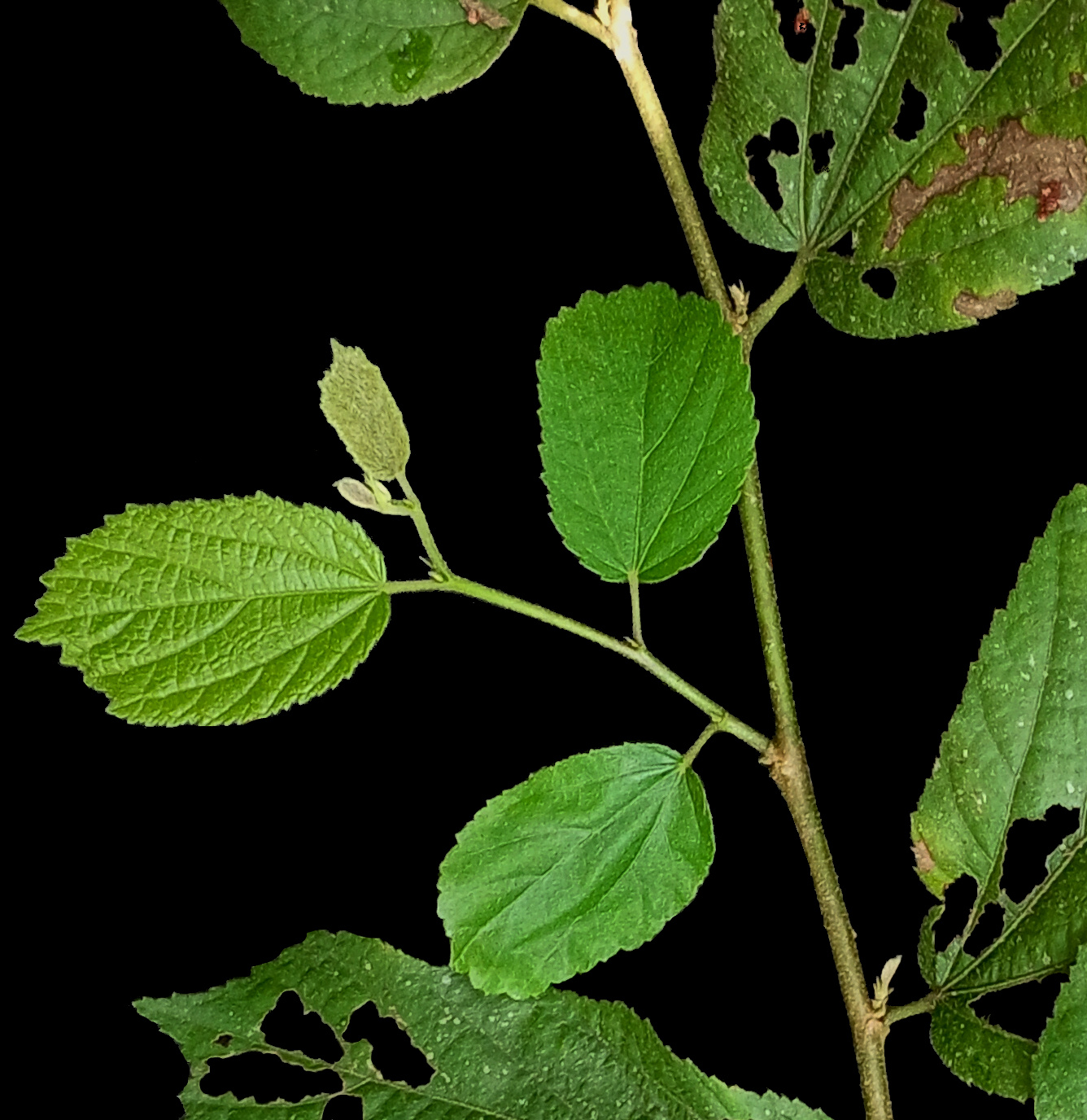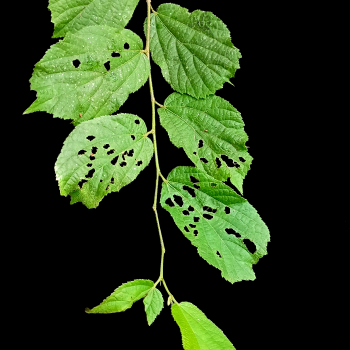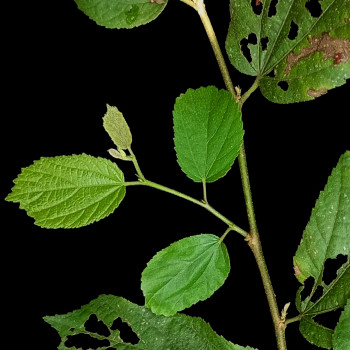Edampiri-valampiri

Scientific Name :
Helicteres isora L.
Synonym(s) :
Helicteres roxburghii G. Don
Local/Common name(s) :
Edampiri-valampiri
Family :
Sterculiaceae
Habit :
Shrubs
Flowering/Fruiting Time :
July-May
Habitat :
Deciduous forests, also in plantaions and plains
Endemic :
No
Status (IUCN) :
Distribution :
India, Sri Lanka, China, Malaysia, Bhutan, Nepal, Java, Australia; Kerala: throughout
Nativity :
Indigenous
Uses :
Medicine, Fibre, Paper pulp, Fodder
Description (Morphology) :
Large shrubs or small trees; bark pale greyish, finely wrinkled; young shoots stellate- tomentose. Leaves simple, alternate, obovate to suborbicular, apex acute or acuminate, base cordate, margin irregularly crenate- serrate; 3-5-nerved at the base, scabrous above and stellately tomentose below; petioles to 1.2 cm long. Flowers axillary, solitary or in few-flowered cymes; bracts 2-3 mm long, linear, 2 brown glands present in the axil of bracts; pedicel to 6 mm long. Calyx slightly yellow, persistent, tubular, splitting in to 5 irregular lobes; tube 1.5-2 cm long, densely stellate hairy without. Petals 5, unequal, 2-2.5 cm long, obovate, clawed, crimson, fading to pale blue. Staminal column 3-3.5 cm long, cylindric; stamens 10 ; staminodes 5. Ovary placed at tip of gynophore, 5-lobed, 5-celled; ovules many; style 5; stigma subulate. Follicles 5, 4-6 cm long, spirally twisted, stellate-tomentose, beaked; seeds 2-3 mm long, angular, black, wrinkled.



